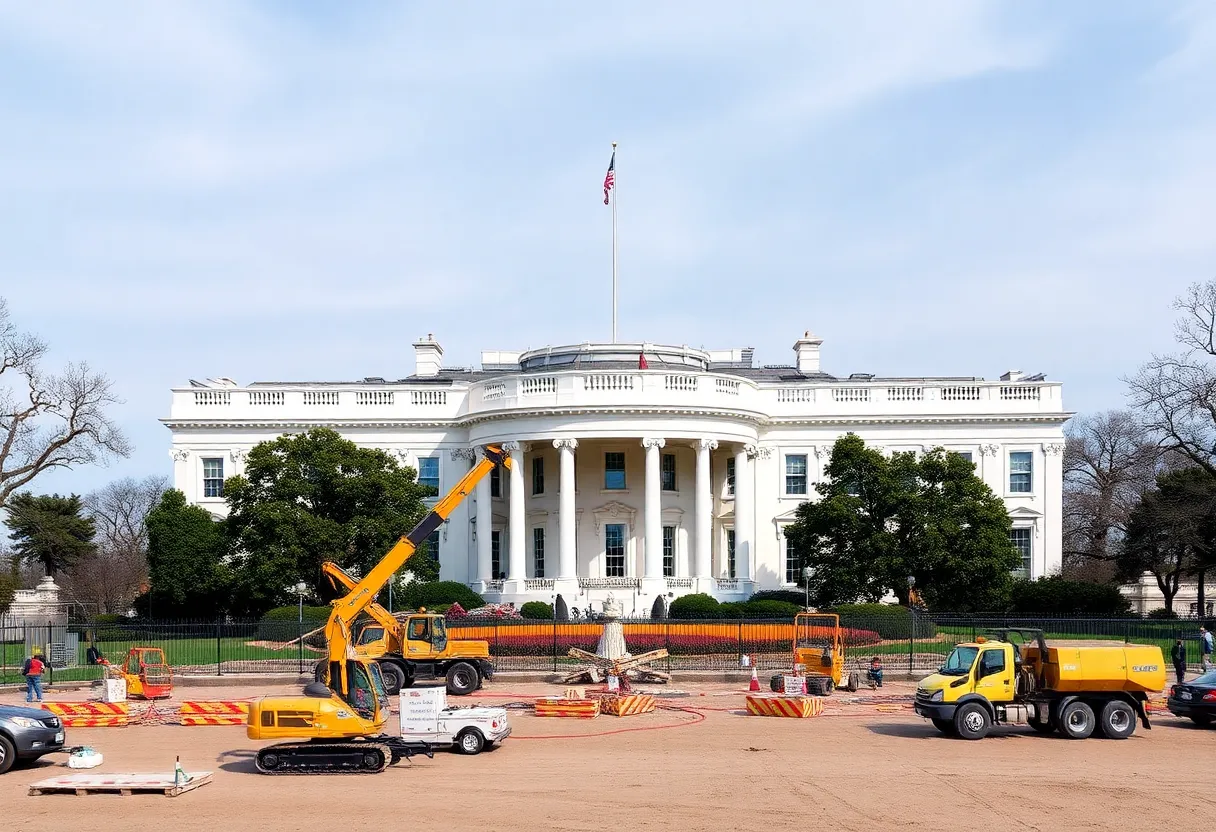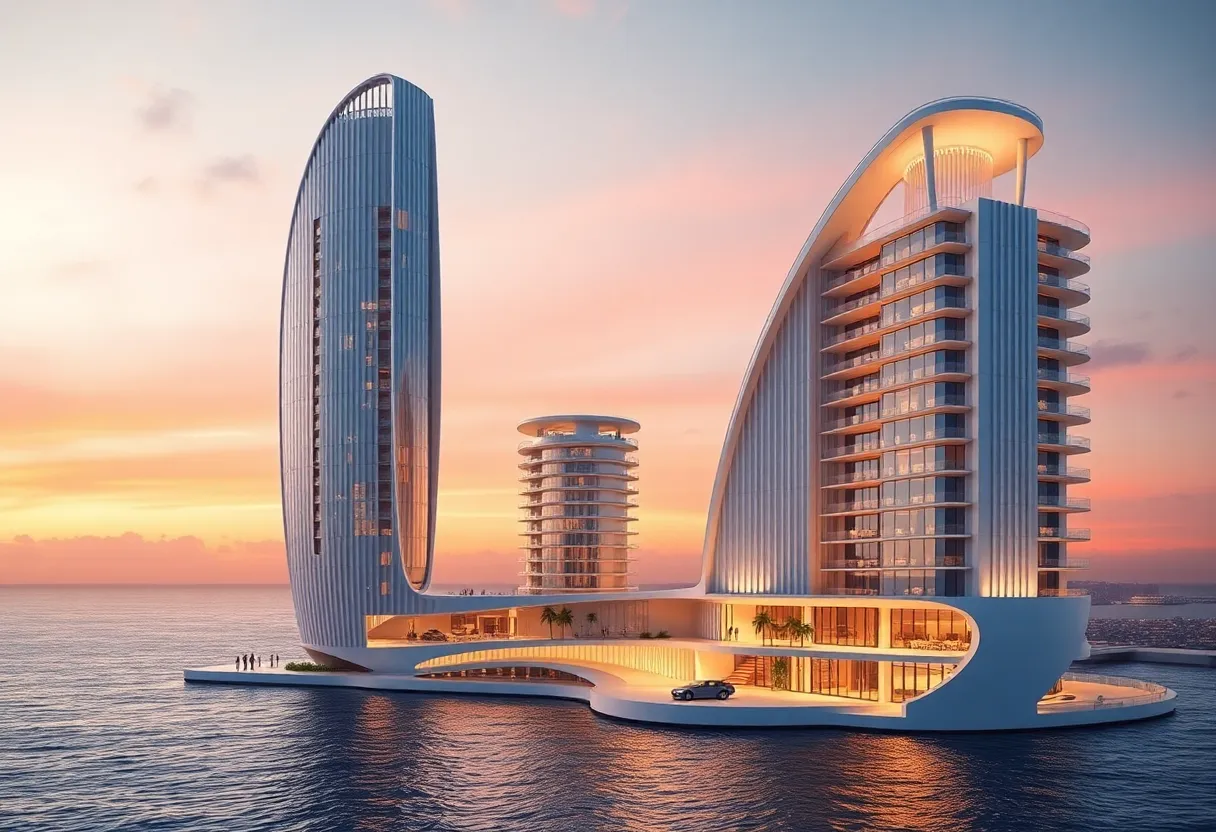News Summary
The demolition of the White House East Wing is progressing as crews prepare for a $250 million ballroom project announced by President Trump. This initiative aims to modernize White House facilities amid concerns over historical preservation and rising costs. Contractors are pushing for expedited reviews to keep the project on track while addressing budget complexities and potential delays. Major discussions are ongoing regarding the integration of new designs with the site’s architectural significance. Stakeholders are monitoring progress closely to balance modernization with preservation of the iconic landmark.
Washington, D.C. – White House East Wing Demolition Advances for $250 Million Ballroom Project
Washington, D.C. – The demolition of the White House East Wing is progressing rapidly as construction crews prepare for a major $250 million ballroom project announced by President Trump. This development marks a significant step in the initiative, with work focusing on clearing the site for the new structure amidst ongoing debates and concerns.
At the forefront, the project involves the continued teardown of the existing East Wing, which is essential for building the proposed ballroom. Contractors are emphasizing the need for expedited reviews to keep the timeline on track, highlighting potential delays that could arise from regulatory hurdles. Meanwhile, rising costs are a key issue, with projections indicating that expenses will exceed initial estimates, adding complexity to the overall budget.
Supporting details reveal that architects are actively discussing the historical impact of the demolition and construction. These conversations center on how the project might alter the site’s long-standing architectural significance, given the White House’s status as a national landmark. Historic preservationists have raised worries about the potential damage to the site’s integrity, pointing to the risk of losing irreplaceable historical elements during the process.
Further, the ballroom project is part of a broader effort to modernize White House facilities. Preparations include site assessments and planning for the new space, which is intended to enhance event capabilities. Contractors’ push for faster approvals stems from the desire to avoid cost overruns and maintain momentum, as any slowdown could amplify financial pressures already evident in updated cost forecasts.
Background and Context
The White House East Wing has served various purposes over the years, including as office space and for public events, making its current transformation a notable shift. The $250 million ballroom project was announced as a way to expand the residence’s capacity for large gatherings, reflecting changing needs for presidential functions. This initiative comes at a time when construction projects nationwide face challenges, but this one is specifically tied to the White House in Washington, D.C.
Architects’ debates underscore the tension between modernization and preservation. They are examining how the new ballroom might integrate with the existing historic framework, drawing on precedents from past White House renovations. Historic preservationists’ concerns highlight the broader implications for cultural heritage, emphasizing the need for careful handling of artifacts and structures during demolition.
Financial aspects are also drawing attention, as the projected cost increases could stem from material prices, labor shortages, or unforeseen site complications. This mirrors trends in the construction sector, where similar projects have experienced budget escalations. The push for expedited reviews by contractors aims to navigate these issues efficiently, ensuring that the project adheres to its core objectives without unnecessary delays.
In summary, the ongoing demolition and preparation for the ballroom represent a pivotal moment for the White House. While the project promises enhanced facilities, it also brings to light important discussions about history, cost management, and regulatory processes. As crews continue their work, stakeholders are monitoring developments closely to balance progress with preservation.
This article draws from recent updates on the project, providing a factual overview based on available information from the past 48 hours.
To provide more depth, the demolition process involves specialized techniques to safely remove sections of the East Wing, ensuring minimal disruption to ongoing White House operations. Crews are using advanced equipment to handle the structure’s age and materials, which date back decades. The $250 million ballroom is envisioned as a state-of-the-art venue, potentially featuring modern amenities like enhanced lighting, acoustics, and accessibility features. Architects are proposing designs that aim to respect the original architecture while incorporating contemporary elements, though these ideas are still under review.
Historic preservationists’ voices add a layer of scrutiny, as they advocate for thorough documentation and possible salvaging of historical components. This could include archiving materials or integrating preserved elements into the new design. Contractors’ efforts to expedite reviews involve coordinating with relevant agencies to streamline permitting, which is crucial given the high-profile nature of the site. Rising costs, now projected to surpass initial estimates, may influence future funding decisions, prompting closer financial oversight.
The project’s timeline remains fluid, with preparations expected to transition into full construction soon. This development not only affects the White House but also serves as an example of how large-scale renovations can intersect with historical preservation in urban settings like Washington, D.C. Overall, the initiative underscores the challenges of updating iconic structures while honoring their legacy.
FAQ Section
Frequently Asked Questions
Below are answers to common questions about the White House East Wing demolition and the $250 million ballroom project.
- What is the current status of the White House East Wing demolition?
- The demolition of the White House East Wing is continuing apace as crews prepare for the $250 million ballroom project.
- What is the purpose of the $250 million ballroom project?
- The $250 million ballroom project was announced by President Trump as part of preparations for a new structure at the White House East Wing.
- What concerns have been raised about the project?
- Historic preservationists voice concerns over the site’s integrity, amid rising costs projected to top initial estimates.
- What are architects debating regarding the project?
- Architects debate the historical impact of the White House East Wing demolition and the $250 million ballroom project.
- What actions are contractors taking for the project?
- Contractors push for expedited reviews to advance the White House East Wing demolition and the $250 million ballroom project.
Key Features Chart
Below is a simple table outlining the key features of the White House East Wing demolition and ballroom project:
| Feature | Description |
|---|---|
| Project Cost | $250 million, with projections to top initial estimates |
| Current Status | Demolition continuing apace |
| Main Concerns | Historical impact and site integrity |
| Key Actions | Contractors pushing for expedited reviews |
| Architectural Focus | Debates on historical preservation |
Deeper Dive: News & Info About This Topic
Construction FL Resources
Demolition Begins on White House East Wing for Ballroom Expansion
U.S. Construction Expansion Index Shows Steady Growth
Demolition and Renovation of White House Ballroom Underway
Demolition Underway at the White House East Wing
Demolition of White House East Wing Starts for New Ballroom
Demolition Begins on White House East Wing for New Ballroom
Partial Demolition for White House Ballroom Project Begins
Construction Begins on New White House Ballroom
Bollinger Shipyards Selected to Build Coast Guard Arctic Cutters
President Urges Mortgage Backers to Push Large Homebuilders to Increase Supply
Author: Construction FL News
The FLORIDA STAFF WRITER represents the experienced team at constructionflnews.com, your go-to source for actionable local news and information in Florida and beyond. Specializing in "news you can use," we cover essential topics like product reviews for personal and business needs, local business directories, politics, real estate trends, neighborhood insights, and state news affecting the area—with deep expertise drawn from years of dedicated reporting and strong community input, including local press releases and business updates. We deliver top reporting on high-value events such as the Florida Build Expo, major infrastructure projects, and advancements in construction technology showcases. Our coverage extends to key organizations like the Associated Builders and Contractors of Florida and the Florida Home Builders Association, plus leading businesses in construction and legal services that power the local economy such as CMiC Global and Shutts & Bowen LLP. As part of the broader network, including constructioncanews.com, constructionnynews.com, and constructiontxnews.com, we provide comprehensive, credible insights into the dynamic construction landscape across multiple states.





